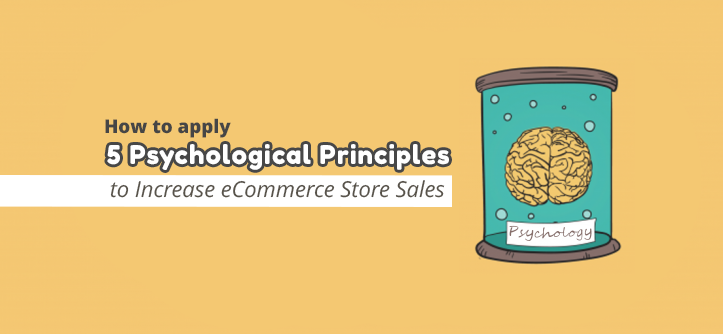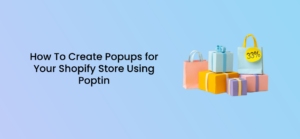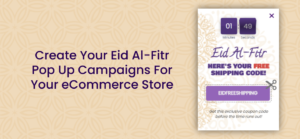We zijn ons er allemaal van bewust dat het gebied van online winkelen voortdurend voor onze ogen groeit. Enkele cijfers om de zaken in perspectief te plaatsen:
– In de VS vertegenwoordigt de online verkoop momenteel (slechts) 8% van de totale detailhandelsomzet;
– in Europa bedraagt dit aantal 14%.
– 53% van alle internetgebruikers heeft in 2016 minimaal één aankoop gedaan (ongeveer 1 miljard gebruikers);
– Een gemiddelde gebruiker in de VS geeft gemiddeld $1800 uit aan aankopen gedurende een jaar, in Europa bedraagt dit $1600.
– De belangrijkste bronnen van verkeer naar e-commercesites: organisch, e-mail en PPC.
Deze infographic toont aanvullende interessante gegevens die u misschien wilt zien.
Eigenaren van e-commercewinkels zijn non-stop bezig met het vinden van manieren om hun site te verbeteren en de omzet te verhogen. Het is uiteraard mogelijk om meer verkeer te blijven genereren, maar allereerst moet men bedenken hoe men de conversie naar verkoop uit het bestaande verkeer kan vergroten.
Het volgende diagram toont de belangrijkste redenen voor het verlaten van een winkelwagentje volgens de site Statista:

Over het geheel genomen zou ik zeggen dat de meeste cursussen die ik volgde als onderdeel van mijn studie economie aan de Universiteit van Tel Aviv overbodig waren of geen voeling hadden met de werkelijkheid, behalve één cursus waarvan ik vond dat deze echt to the point was en die ik erg leuk vond – een cursus Gedragseconomie. Ja, Dan Ariely en al die hype rond rationele beslissingen, enzovoort. Dit opende voor mij een wereld van begrip van de gebruikers en van het proberen te achterhalen wat de 'elektrische stromen' veroorzaakt die door hun hersenen gaan wanneer ze een actie of beslissing van welke aard dan ook uitvoeren.
Aanbevolen: Naast het boek van Dan Ariely raad ik je ook aan om het boek Hooked van Nir Eyal te lezen, over hoe je een gewoonte kunt vormen uit het gebruik van je product, en wat mensen ertoe drijft om gefixeerd te raken op het ene product in plaats van op het andere.
In dit artikel spreek ik over vijf bewezen psychologische principes die de beslissingen van surfers beïnvloeden bij het online kopen:
Het schaarste-effect
Ken je het verhaal over de potjes met de koekjes? Dit is een van de meer bekende verhalen die dit principe illustreren, en het gaat als volgt:
Stephen Worchel en zijn collega's voerden in 1975 een experiment uit waarbij ze mensen twee potten koekjes aanboden. In de ene pot zaten 10 koekjes en in de andere maar 2 koekjes. Uit de resultaten van het experiment bleek dat de meeste mensen de voorkeur gaven aan de koekjes in de lege pot (die twee koekjes bevatte), ook al waren de koekjes in de twee potten volledig identiek.

Als iets schaars of moeilijk verkrijgbaar is, hebben we de neiging om het méér te willen. Misschien heb je er ook wel eens van gehoord FOMO - Foor Of MIssing Out of verliesaversie. We besteden, of verspillen misschien, de helft van onze tijd op Facebook en op sociale media, omdat we bang zijn een interessante update of nieuws te missen (hoewel we weten dat dit niet elke minuut gebeurt). Een ander principe dat hand in hand gaat met de angst om iets te missen is urgentie.
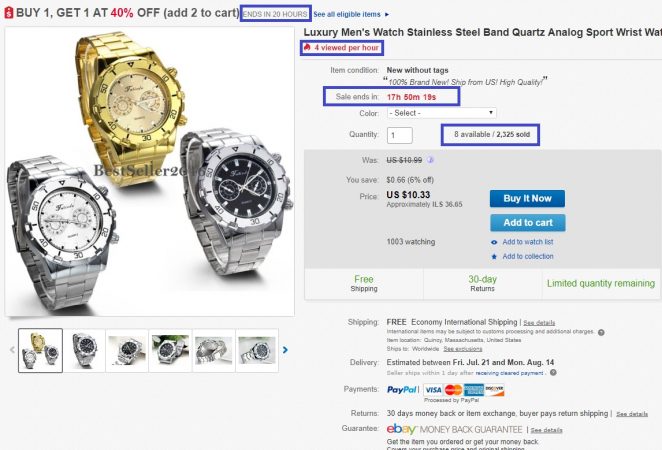
Onder deze categorie is het heel gebruikelijk om zinnen of zinsneden te zien als: meest populair, meest verkocht, 12 mensen bekijken dit product nu, dit product is het afgelopen uur 22 keer gekocht, de laatste 5 stuks op voorraad, nog 3 uur voordat de aanbieding afloopt, bestel binnen 27 minuten en je ontvangt de product morgen, enzovoort.
Wederkerigheid
Ik ben er zeker van dat je dit al vaak bent tegengekomen: je krijgt iets gratis aangeboden, zoals een reisgids/een eBook in de digitale wereld, of misschien een nieuw soort kaas in de supermarkt in de fysieke wereld. In ruil daarvoor wordt u gevraagd uw e-mailadres achter te laten (verwijzend naar de eerste soort aanbieding) of voelt u zich verplicht een groter pakket kaas te proberen (verwijzend naar de tweede soort aanbieding).

Andere voorbeelden: Een online calculator om iets uit te rekenen (bijvoorbeeld een hypotheek), een app voor kledingstukken op maat nadat je een afbeelding uploadt, kwalitatieve content in een blog, et cetera.
Het frame-effect
In één woord: context. Als Jimi Hendrix vandaag nog leefde en je de kans had om zijn show te zien, zou je waarschijnlijk bereid zijn een flink bedrag voor een kaartje te betalen. Maar als hij aan de kant van de straat zou optreden, zou je waarschijnlijk zijn doorgelopen zonder hem helemaal te hebben opgemerkt. Met andere woorden, het hangt allemaal af van de context en de specifieke situatie.
Waar gaat je voorkeur naar uit? Mager ijs met 90% minder suiker dan het gemiddelde ijs? Of een ijsje met 10% van het gemiddelde suikergehalte? De meeste ondervraagde mensen zouden voor de eerste optie kiezen. Hetzelfde geldt voor een vraag als: Een plastische ingreep met 90% kans op succes, of een plastische ingreep met 10% kans op mislukken. Wanneer we zoiets verwoorden, is het belangrijk om na te denken over de uitkomst (positief of negatief) en de kwaliteiten die we willen benadrukken.

Het verankeringseffect
Het verankeringsprincipe houdt in dat de beslissingen van mensen worden beïnvloed door de eerste informatie waaraan ze worden blootgesteld over een bepaald onderwerp. In feite vertrouwen ze te veel op deze informatie en wordt het een anker dat moeilijk te verplaatsen is.
In ons dagelijks leven komen we het vaak tegen als er een vraag wordt gesteld, zoals hoeveel een specifiek product zou kosten, of hoe lang het zou duren om op een specifieke plaats te komen. We krijgen een bepaald eerste antwoord waar we ons later waarschijnlijk aan zullen houden. Als we teruggaan naar e-commercewinkels, ziet u mogelijk dit principe geïmplementeerd, waarbij u, zodra u een startpagina bezoekt, een bepaald artikel ziet met een kortingsprijs ernaast en een originele prijs doorgestreept.
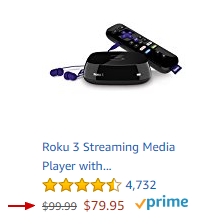
Als u wat verder zoekt op die site, vindt u waarschijnlijk een soortgelijk product (misschien identiek) voor dezelfde prijs of zelfs voor een lagere prijs. Voor iedereen die meer wil weten over dit principe: dit artikel wordt sterk aanbevolen.
Verzekering
Dit onderdeel gaat over beloftes, risico's en het creëren van vertrouwen bij potentiële kopers.
Als u terugkijkt op het eerste diagram in dit artikel, ziet u dat de tweede reden waarom gebruikers hun aankoop niet online voltooien, is omdat ze er niet genoeg vertrouwen in hebben of denken dat het niet veilig genoeg is. Nog een voorbeeld: je gaat midden op een werkdag uit eten en ziet een lange rij staan voor een van de restaurants. Wat zou jij denken? Waarschijnlijk dat dit restaurant goed is en daarom een lange rij staat en mensen bereid zijn buiten te wachten. Je mag het noemen kuddegedrag in dit geval, maar ook een “kudde” van geverifieerde beoordelingen en reacties kunnen een klant op dezelfde manier overtuigen als een lange rij buiten een restaurant.
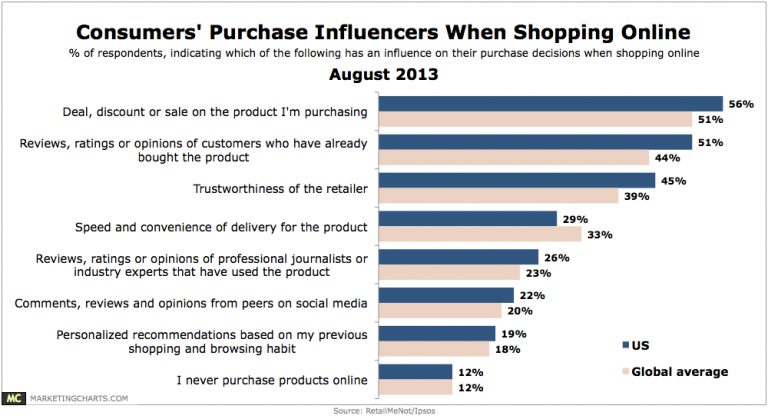
Hoewel Amazon en eBay zijn enorme sites die iedereen kent, maar ze blijven manieren gebruiken om de zekerheid bij kopers te vergroten. Hoe doe je dat?
Zoals je in de bovenstaande grafiek kunt zien – beoordelingen, getuigenissen en opmerkingen, geloofwaardigheid van de verkoper (in het geval van Amazon en eBay bijvoorbeeld), sociale bewijzen, geverifieerde getuigenissen met echte gezichten, Etc.
En natuurlijk enkele voorbeelden:
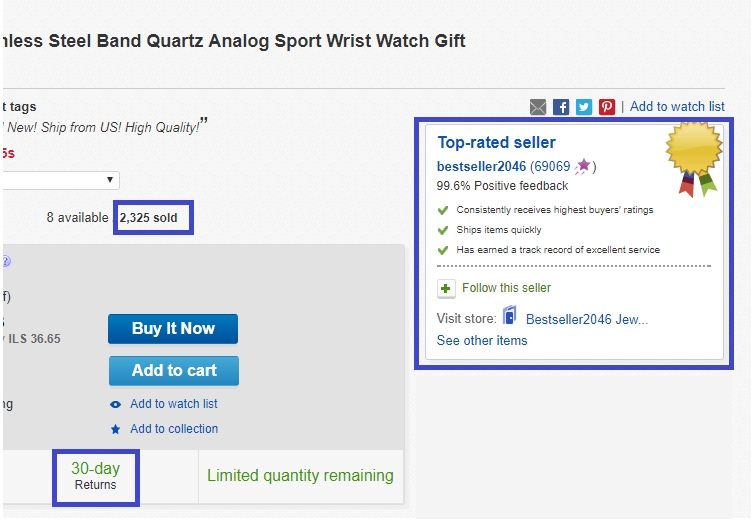

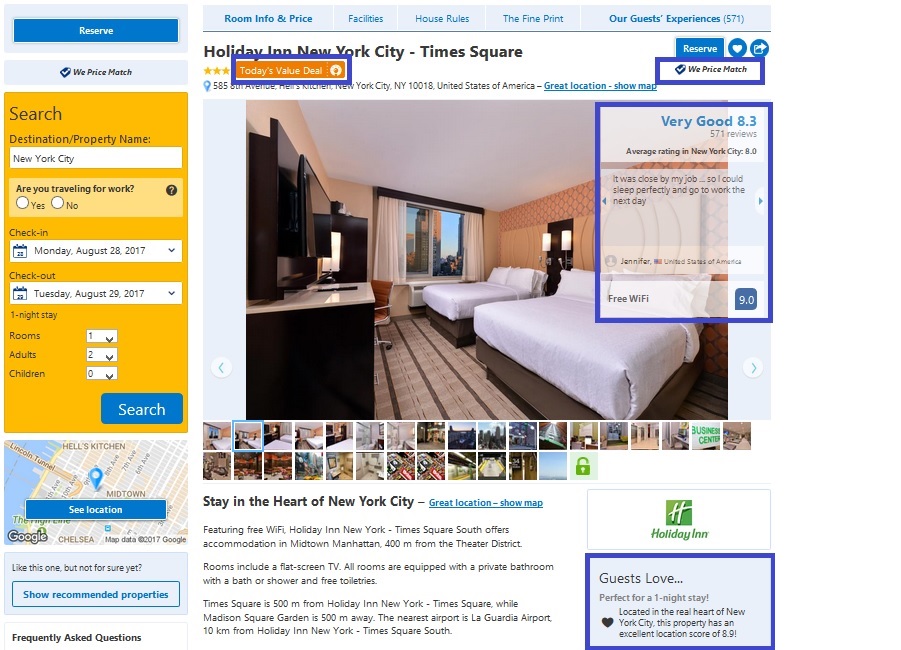
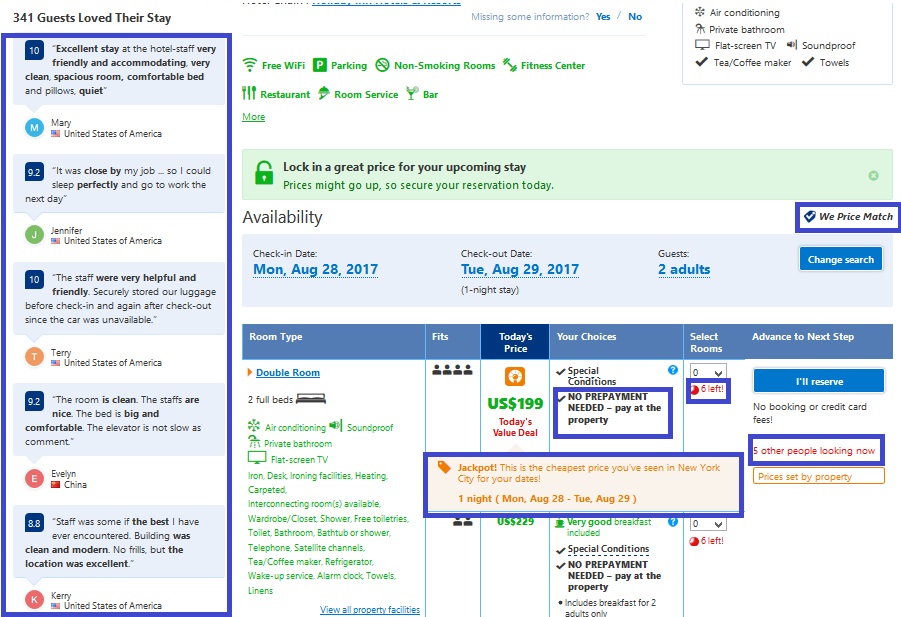
Een voorbeeld van onze site:
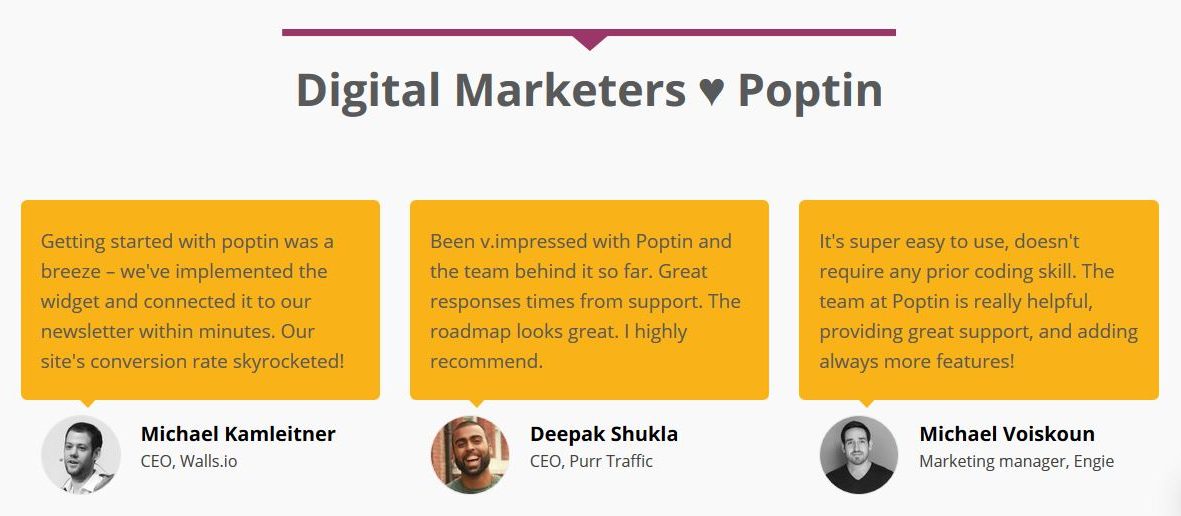
Ik hoor graag hoe jij deze en andere principes implementeert in jouw virtuele winkels in de reacties hieronder 😃
